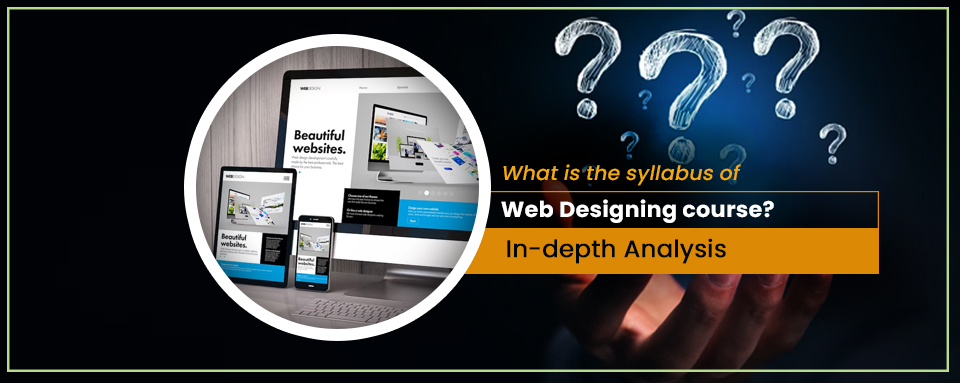What is the syllabus of Web Designing Course in 2023?
Table of Contents
ToggleThe syllabus of web designing typically covers a range of topics and skills necessary to become proficient in designing and developing websites. While specific syllabi may vary depending on the institution or course, here is a general outline of the key subjects and concepts commonly included in a web design course syllabus.
Syllabus of Web Designing Course:
-
Introduction to Web Design:
- Understanding the web and its evolution
- Overview of web design principles and best practises
- Differentiating between web design and web development
-
HTML (Hypertext Markup Language):
- Structure and syntax of HTML
- Working with text, images, links, and lists
- Creating tables, forms, and multimedia elements
-
CSS (Cascading Style Sheets):
- Introduction to CSS and its role in web design
- Selectors, properties, and values
- Styling text, colours, backgrounds, and layouts
- CSS box model and positioning
-
Responsive Web Design:
- Designing websites that adapt to different devices and screen sizes
- Using media queries and flexible grids
- Mobile-first approach and viewport meta tag
-
Typography:
- Choosing and pairing fonts for web design
- Understanding typography principles and hierarchy
- Using web fonts and icon fonts
-
Web Graphics and Multimedia:
- Optimising images for the web
- Creating and editing graphics using tools like Adobe Photoshop or Illustrator
- Incorporating audio and video elements into web pages
-
User Experience (UX) Design:
- Introduction to UX principles and user-centred design
- Conducting user research and creating user personas
- Wireframing, prototyping, and usability testing
-
Web Design Software and Tools:
- Introduction to popular web design software and tools like Adobe Dreamweaver, Sketch, or Figma
- Understanding their features and functionalities
- Hands-on practise with designing and prototyping tools
-
Web Design Trends and Technologies:
- Exploring current trends and emerging technologies in web design
- Introduction to frameworks and libraries like Bootstrap or Foundation
- Basics of front-end development languages like JavaScript and jQuery
-
Web Design Project:
- Applying learned skills and concepts to create a complete web design project
- Planning, designing, and implementing a responsive and visually appealing website
- Incorporating user experience design principles and industry best practises
It’s important to note that the syllabus for web design can vary based on the level of the course (beginner, intermediate, or advanced) and the specific goals and focus of the programme or institution offering the course. Additionally, the syllabus may evolve over time to incorporate new technologies, design trends, and industry requirements.
Read also: Which Web Design course is best?
Wants to read more Article on Web design, development & SEO and others… Visit our blog..

